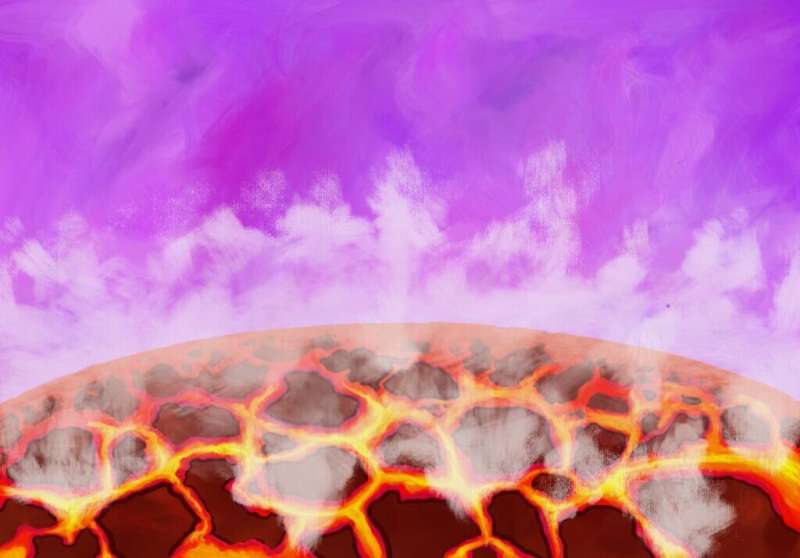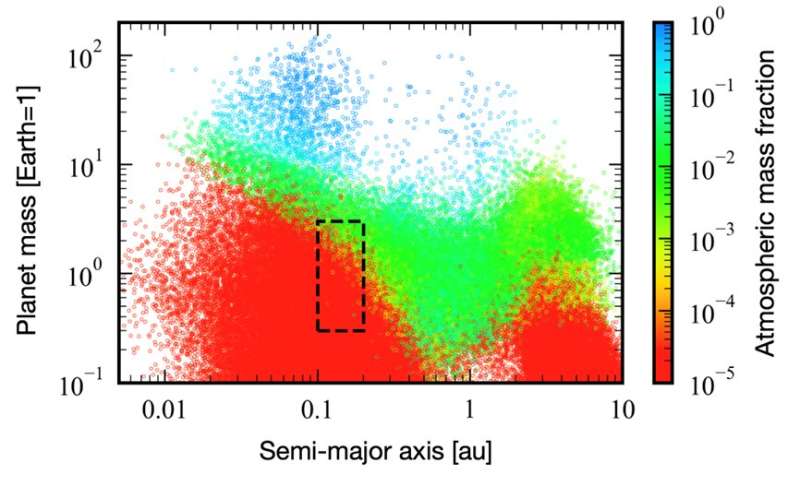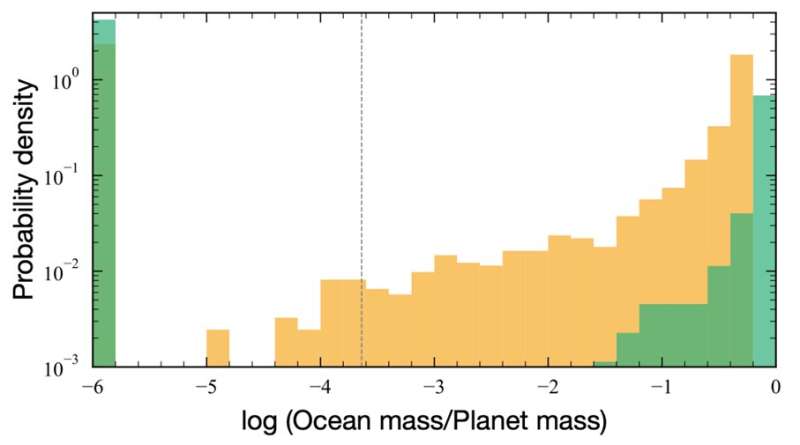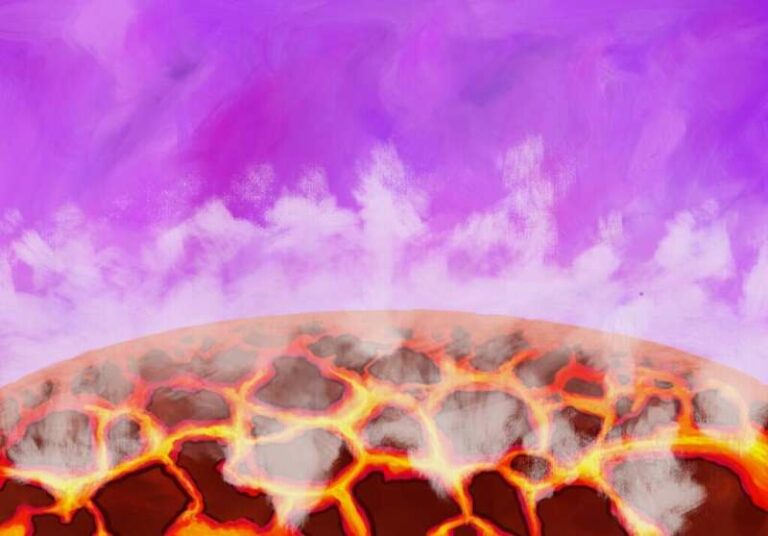New theory predicts Earth-like, watery planets exist around red dwarfs
The search for temperate, rocky exoplanets—often referred to as habitable planets—has recently concentrated on Earth-like worlds. The majority of recent missions are aimed toward stars that are colder than the sun. These stars, which are common in the solar vicinity, are referred to as red dwarfs or M-type stars.
For a planet to maintain a temperate temperature, there must be a sufficient supply of ocean and moderate levels of insolation. However, previous planet formation models indicate that the likelihood of planets meeting these requirements in the vicinity of M-type stars is low.

Tadahiro Kimura, a doctoral candidate at the University of Tokyo, and Prof. Masahiro Ikoma, of the NAOJ’s Division of Science, have been working on new simulations that concentrate on the formation of a hydrogen-rich atmosphere from the protoplanetary disk and water production through the interaction of the atmosphere and magma ocean.
By creating a novel model of planet formation, they were able to forecast how much seawater exoplanets circling M-type stars will contain. They conclude that a significant portion of planets with Earth-like radii and insolation circling M-type stars contain ocean, according to their estimation. This means that it is likely that planets with temperate climates will be discovered within the next ten years. The findings of the study were released on September 29 in Nature Astronomy.
More than 5,000 exoplanets (planets circling stars other than the sun) have been found since the first discovery in 1995. The discovery of such a vast number of exoplanets has demonstrated the prevalence of planetary systems across the cosmos. However, it has also become evident that exoplanets vary in size, composition, distance from the star at their center, and insolation.
Numerous planets the size of Earth have been discovered so far. It would be really interesting to know if any of them have a temperate climate like the Earth. Water is essential for life on Earth, but it also significantly influences the climate. It is generally known that maintaining temperate temperatures requires an ocean with a moderate volume of water as well as a moderate amount of solar radiation.
The functioning of the carbon cycle with plate tectonics and continental weathering allows the current Earth to retain a mild temperature; if oceanic water were several dozen times more abundant than it is today, the carbon cycle would be constrained, resulting in a very hot or cold climate.
One widely held belief is that water-bearing rocky or ice bodies transported the seas of the modern Earth. Although M-type stars are the major focus of future habitable planet searches, habitable planets are very unlikely to be discovered, according to previous research applying this concept to exoplanets orbiting M-type stars, planets with intermediate water content are rare.
The generation of water in an accumulating atmosphere, on the other hand, was suggested as a different method of acquiring water in earlier study by Prof. Ikoma and his colleague. A planet typically gravitationally absorbs gas from the protoplanetary disk as it expands, forming an atmosphere primarily made of hydrogen.
In addition, the planet’s stony surface is considered to be molten from the heat of cosmic collisions (see Fig. 1), meaning that a lava ocean covers the planet. At this point, the magma ocean’s oxides and air hydrogen undergo a chemical reaction that results in the production of water. The formation of a planet that is more water-rich than predicted by traditional theoretical models is feasible when the impacts of such a water-producing reaction are taken into consideration.

The process of planet formation has a significant impact on the quantity of hydrous rock that a planet acquires and the amount of water that it produces through water-producing processes. In this work, Tadahiro Kimura and Masahiro Ikoma re-estimated the frequency of aqua planets in extrasolar systems surrounding M-type stars using a novel planetary population synthesis model.
Based on the most recent ideas on planet formation, the model tracks the mass increase and orbital history of planets and can determine how much water is added during the process. The model now includes the impact of the creation of water in the primordial atmosphere in addition to the previously studied acquisition of hydrous rocks.
This model’s numerical simulations demonstrate that a range of planets with varied sizes and atmosphere masses are created in different places (see Fig. 2). Fig. 3 displays the estimated water content for planets in the habitable zone.

Exoplanets circling M-type stars can preserve a wide range of water quantities when water formation in the primordial atmosphere functions, as illustrated in the image. Some of these planets developed with saltwater that was comparable to the Earth’s in terms of volume. On these planets, atmospheric water production provides the majority of the ocean. Several percent of planets with planetary radii between 0.7 and 1.3 times that of the Earth are predicted to retain sufficient water to support temperate temperatures (about 0.1-100 times the Earth’s saltwater concentration) based on analysis of the computational data.
It is anticipated that current and future exoplanet exploration projects like TESS and PLATO will find around 100 Earth-sized planets in the habitable zone around M-type stars. Several of these planets are expected to be aqua worlds with Earth-like warm temperatures, according to the study’s findings.
The presence of water molecules and other components in the atmosphere will also be revealed through observations of the atmospheric spectra of exoplanets by the infrared space observatories JWST and Ariel. These data are anticipated to confirm the theoretical hypotheses put forward in this study and further our knowledge of how aqua planets like the Earth are formed.
Source:PhysOrg
Do not forget to share your opinion with us to provide you with the best posts !





0 Comments